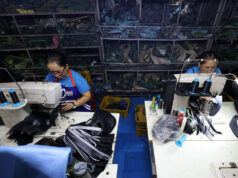CLSU develops contaminant-removing product for aquaculture
A SOIL and water conditioner that removes pollutants from water used in tilapia aquaculture has been developed by Central Luzon State University (CLSU).
Juvy J. Monserate, head of CLSU’s nanotechnology research and development facility and project leader for the conditioner, said in a mobile phone interview that the product uses zeolite-silica nanocomposites (ZNC) and has been proven effective in cleaning pond water.
“The project initially evaluated the effects of the zeolite-silica nanoparticles on water quality and growth parameters of tilapia under laboratory conditions and has yielded positive results,” Mr. Monserate said.
Mr. Monserate said ZNC improves water quality and soil condition for tilapia production via the use of modified nano activated carbon and nanoclay clinoptholite.
He added that nano-silica and nano-zeolite composites also bring down the level of ammonia-nitrogen and total dissolved solids in water used for tilapia farms.
“Other possible benefits of the technology include reuse or recycling of water after harvests, thus, reducing the pressure towards the groundwater resulting in healthier fish and higher income for fish farmers,” Mr. Monserate said.
The project team estimates that fish farmers using ZNC will need to invest P11,000 per hectare to use ZNC, with the payoff being higher yields and reduced production costs overall, “since a portion of the water can be recycled,” Mr. Monserate said.
“Succeeding production will also cost much less since the need for inputs will fall,” he added, touting a potential return on investment for ZNC users of 40.6%, against 25.3% for non-users.
Mr. Monserate said estimated tilapia survival rates in farms using ZNC were 60%, as opposed to 40% for the control group.
According to Mr. Monserate, the project is due to be field tested by June or July at Isabela State University and other institutions.
The project was funded by the Department of Science and Technology – Philippine Council for Agriculture, Aquatic and Natural Resources Research and Development.
The Philippine Statistics Authority estimates that total fish production hit 4.403 million metric tons (MT) in 2020, down 0.3%.
Aquaculture farms accounted for 52.8% or 2.32 million MT of overall production, followed by municipal fisheries at 25% or 1.10 million MT, and commercial fisheries at 22.2% or 978,170 MT. — Revin Mikhael D. Ochave



